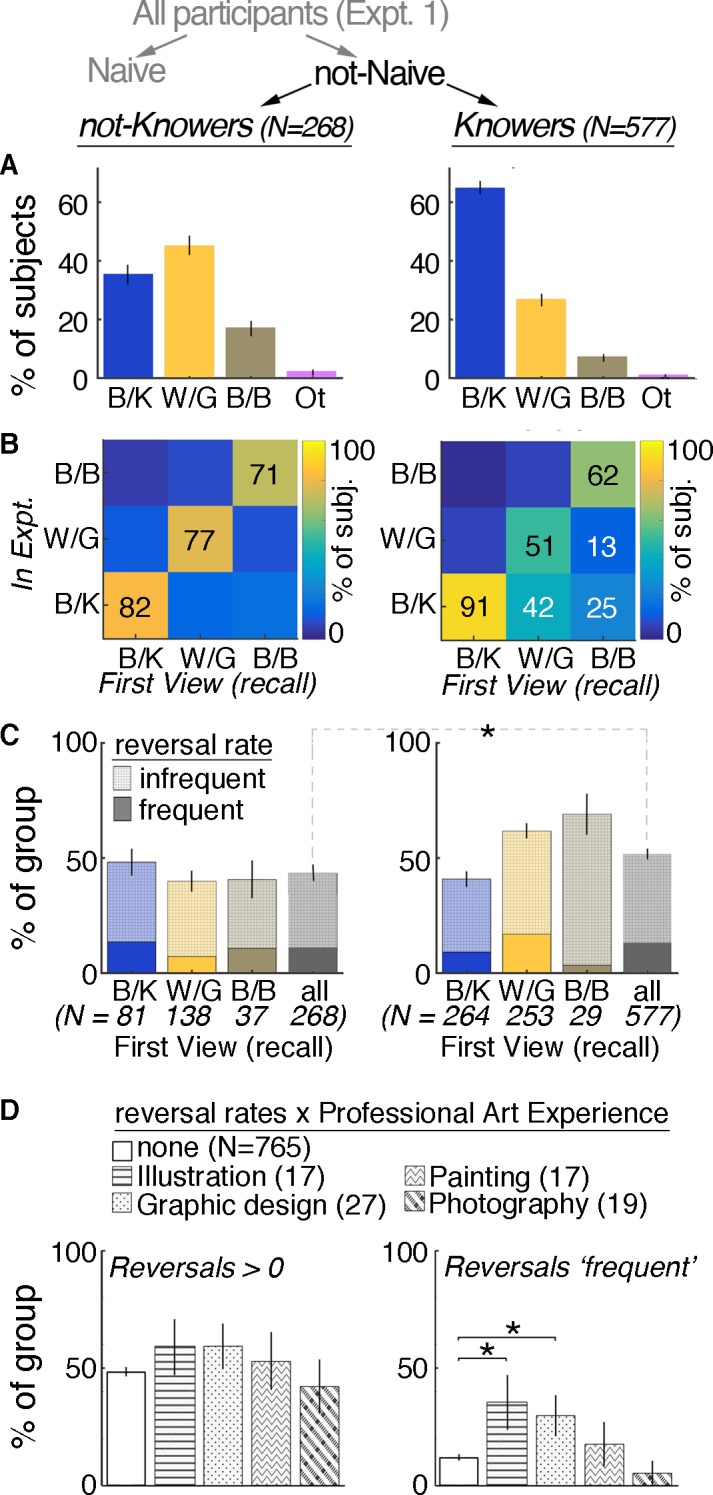Figure 9.

Familiarity with the dress image affects subsequent viewings. (A) The distribution of color reports (Experiment 1; image scale always 36%) from subjects who had seen the image before (N = 845) and had knowledge of the dress's colors in real life (“Knowers,” N = 577) differed from the distribution of reports from subjects who had seen the image and did not know the dress's real colors (“Not-knowers,” N = 268; chi-square test for difference of proportions: p < 0.001, X2 = 66). (B) Color reports of the dress during the experiment as a function of how subjects first perceived the dress (recalled from memory). Results for Not-knowers are predominantly along the x = y diagonal, reflecting dominance of initial stable state (though the presence of deviations was still significant: chi-square test of independence: X2 = 277, p < 0.001). Results for Knowers showed more substantial deviations from the diagonal, particularly for subjects who first saw W/G or B/B, reflecting a weakening of initial state and an increased dominance of B/K state (the color of the dress in real life; chi-square test of independence: X2 = 394, p < 0.001). (C) Quantification of self- reported reversal rates for Knowers and Not-knowers; percentages computed within class (B/K, W/G, B/B, Other; class corresponded to first-view percepts from memory). Subjects were asked: “In your viewings prior to this study, did your perception of the dress colors ever change? Y/N” and “How often did you see it change? Frequently/Infrequently/Never.” The proportion of subjects who reported changes was higher among Knowers than Not-knowers (gray asterisk; chi-square test for difference of proportions: p = 0.036, X2 = 4.4). Error bars indicate standard errors (bootstrapping, sampling with replacement). (D) Quantification of self-reported reversals as a function of professional art experience. Left panel shows the proportion of subjects who reported at least one reversal, sorted by professional art experience. Right panel shows the proportion of those subjects who reported that reversals were frequent. Compared to non-artists, reports of frequent reversals were significantly higher among subjects who indicated having professional art experience in the fields of illustration (p = 0.004, two-proportion z test) and graphic design (p = 0.005). Error bars indicate standard errors (bootstrapping, sampling with replacement).
